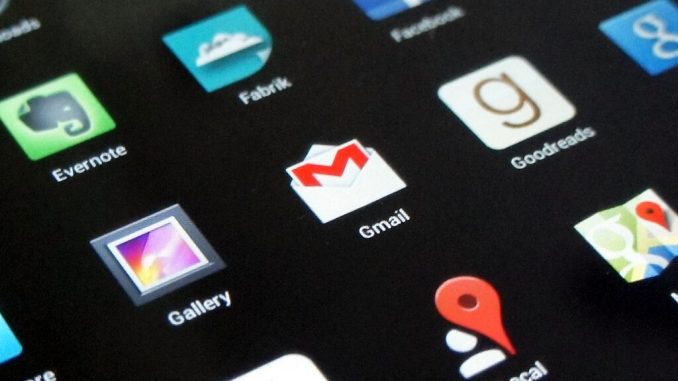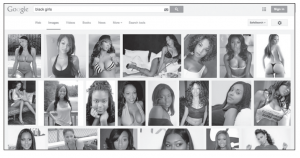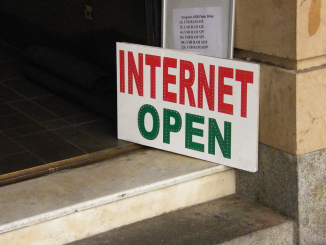
The existence of unequal rights and opportunities amongst individuals creates a divide in status, which constructs the notion of structural inequalities (United Nations ESCWA, 2021). These disparities occurring in fields of education, healthcare, wealth and society as a whole are riddled within the makings of the Internet (Souter, 2018). The intended purpose of the web was to connect users and disseminate information, ideas and insights from all nations in a free, open environment (Lusoli & Turner, 2021). Whilst this allows for freedom of speech and movements against injustices, the current culture is plagued with “online racism, hate speech, harassment and fake news” (p. 99, Flew, 2019). This can be attributed to a multitude of factors including lack of regulation, systemic gender imbalances, market monopolisation and the digital divide between nations to skim the surface of the issue. Thus, the conflicting view over whether the internets’ provisions are causing more harm than good, in regards to structural inequalities, will be further analysed in this essay.
Structural inequalities rooted in the webs development
- The building blocks
Since the internet was envisioned by J.C.R. Licklider in 1962, its origin was tied to the work of white, male dominated, hetero-normative individuals (Lusoli & Turner, 2021), (Leiner et. Al, 1997). From then on, the leaders and platform creators in the digital world have continued to be cut from the same block, creating a bromance bubble where outsiders find it nearly impossible to enter (Lusoli & Turner, 2021). Bakardjieva’s “rich get richer” (p. 66, 2011) model outlines how those with access manipulate this power to better themselves, thus allowing for those on top to remain, which has been the case as the internet has continued to develop since the 1960’s (Noble, 2018).
2. Modern Developments
The internet is an everchanging space, where platforms and programs continue to emerge and grow (Berners-Lee, 2019). Silicon Valley, based in Northern California in the United States, is described as the “leading hub of innovation and development” (p. 1, ICANN, 2021) in the technological sector. Founding some of the world’s largest tech giants, Apple, Google and Oracle, this neighbourhood has evidently constituted to the internet’s development. This leads one to analyse which individuals constitute the area, arriving at an oligarchy of neoliberal capitalists who have built in their own hegemonic views and beliefs into a system full of diverse users forced to conform to their programs (Patnaik, 2017). Algorithms and SEO’s dominate the online world, manipulating the data of users and controlling what information is supplied to them (Noble, 2018). The nature of these functions mimic those of their creators (Noble, 2018). This is seen in the way women, black females, heterosexuals and races deferring from Silicon Valley’s dominant strain are misrepresented due to the “racist and sexist bias in search” (p. 31, Noble, 2018) and the policies which are tied to structural inequalities that neoliberal makers of the internet have created (refer to figure 1.1).

The internet is fostering structural inequalities
These structural inequalities so evidently built into the development of the internet have harboured a space where those of a differing race, gender, nationality or social class are being further isolated due to current toxic technocultures of the internet (Massanari, 2017). Berners-Lee outlines the current downfalls of the internet that allow for structural inequalities to cultivate to be “deliberate, malicious intent” (hacking, criminal behaviour), the “system design that creates perverse incentives” and the “unintended negative consequences of benevolent design” ( p. 1, 2019). Scammers and hackers, with the intention to commit crimes and spread hateful speech across all platforms, have the free ability to do so due the open-source nature of internet software (Castells, 2001). This fosters the power for those with the skills and access to reinforce racist, hegemonic ideologies and prejudices, creating a divide amongst those without them (Noble, 2018).
Platforms, such as Reddit are home to a breeding ground for the beliefs “of certain groups (often young, white, cis-gendered, heterosexual males)” (p. 330, Massanari, 2017) to foster, which further marginalizes those on the outside. The architecture of such platforms allow for threads to build and dominate the platforms environment, pushing corrupt notions over what type of individuals they believe can contribute and be active in this space (Massanari, 2017) (refer to figure 1.2). This is seen in the thread ‘/r/Imgoingtohellforthis’ where insulting commentary and stereotypes against women, Muslims and black people rain free (refer to figure 1.2).

Figure 1.2. “Murder Feminists” via Reddit
The notion of the “splinternet” (p. 12, O’Hara & Hall, 2018) outlines how there is now a multitude of internets where each individual is receiving altered versions due to their differing access, governing bodies’ policies, regulation, education and systematic imbalances (O’Hara & Hall, 2018). An exemplar of this can be seen in Pakistan with the platform, Tiktok. The design of this platform is known to allow any individual, with access to the internet and a mobile device, to post content that has the ability to go viral and disseminate to a plethora of viewers (Mc Glew, 2021). Whilst this originally allowed for women subject to scrutiny due to their gender to have a voice in the online world, the government took away this privilege due to its dislike of their freedoms and supposedly indecent videos in the Islamic context (Ghosh, 2021) (refer to figure 1.3).
Figure 1.3. Pakistan bans TikTok over ‘immoral and indecent’ videos, South China Morning Post via Youtube
Those taking charge of the internet, such as the big five tech giants, monopolise the market and use their growing power to “to fashion law and policy for their own ends” (p. 580, Popiel, 2018), using lobbyist reforms to build policies where white-washed, “ideological narrowing” (p. 569, Popiel, 2018) is at the forefront of the internet for all users (Noble & Senft, 2013). This directly exemplifies the imbalance of rights and opportunities due to structure of the internet and how its governance can marginalise its users (O’Hara & Hall, 2018).
Can the internet reduce such inequalities?
- Closing the financial gap
Whilst it has been showcased that structural inequalities are built into and fostered within the internet, the very opensource nature that allows for such inequalities to grow can also create a space for these injustices to be defied (Castells, 2001). Lusoli described the computer as “an instrument of individual liberation and personal freedom” (p. 236, Lusoli & Turner, 2021). Its provisions have allowed structurally oppressed individuals in the physical world to be empowered and thrive independently online (Xiheng & Cahngyu, 2020). Such is the case in China were digital technologies have reduced poverty in rural areas with financial inclusivity and the new ability of entrepreneurship and employment (Xiheng & Cahngyu, 2020).
- Giving a voice
The dissemination of anti-hate speech and movements towards the greater good of those falling victim to structural inequalities is frequented online due to the “end-to-end architecture of the Internet” as it has enabled “freedom of action and permissionless innovation for [its] users” (p. 54, Mueller, 2017). The #metoo movement showcases how the internet has successfully fostered such influential changes for the rights of those systemically oppressed.
Figure 1.4. “#metoo” by duncan is licensed under CC BY-NC 2.0
Such movements belonging to groups created online can be considered as networked publics, which are communities created in the online world between those linked socially and culturally (Boyd, 2010). These publics use technologies affordances to build communities where they can disseminate their rights and their pursuit of greater truth as a group, allowing them to reach wider variants of audiences, thus enabling the reduction of structural inequalities for these marginalised groups (Boyd, 2010).
This leads to the conflicting argument over whether the internet can be solely viewed as the leading cause of structural inequalities or a platform to rectify these issues, causing a reduction in their existence. A settlement thus must be aligned with how Kelty concludes that “new information technologies are seen as a cause both of freedom and of control and coercion” (p. 198, Kelty, 2014).
References
Bakardjieva, M. (2011). The Internet in Everyday Life: Exploring the Tenets and Contributions of Diverse Approaches. In Consalvo, M. & Ess, C. (Eds.). The Handbook of Internet Studies. (pp. 59-82). Blackwell Publishing.
Berners-Lee, T. (2019). 30 years on, what’s next #ForTheWeb? World Wide Web Foundation. https://webfoundation.org/2019/03/web-birthday-30/
Boyd, Danah (2010). Social Network Sites as Networked Publics Affordances, Dynamics, and Implications. In Z. Papacharissi (Ed.), Networked Self: Identity, Community and Culture on Social Network Sites (pp. 39–58). New York: Routledge.
Castells, M. (2001) ‘The Culture of the Internet’, in M. Castells, The Internet Galaxy: Reflections on the Internet, Business and Society. New York: Oxford University Press. pp. 36-64.
Flew, T. (2019), ‘Guarding the Gatekeepers: Trust, Truth and Digital Platforms’, Griffith Review 64, pp. 94-103.
Ghosh, P. (2021). Pakistan bans TikTok for 4th time, for inappropriate content. Hindustan Times, https://www.hindustantimes.com/world-news/pakistan-bans-tiktok-for-4th-time-for-inappropriate-content-101626853759583.html
ICANN. (2021). About Silicon Valley. ICANN, https://archive.icann.org/en/meetings/siliconvalley2011/about.html
Kelty, C. M. (2014) ‘The Fog of Freedom’. In T. Gillespie, P. J. Boczkowski and K. A. Foot (Eds.) Media Technologies: Essays on Communication, Materiality, and Society. MIT Press. pp 196-220
Lusoli, A. & Turner, F. (2021), ‘“It’s an Ongoing Bromance”: Counterculture and Cyberculture in Silicon Valley—An Interview with Fred Turner. Journal of Management Inquiry 30(2), pp. 235-242.
Massanari, A. (2017). #Gamergate and The Fappening: How Reddit’s algorithm, governance, and culture support toxic technocultures. New Media & Society, 19(3), 329–346. https://doi.org/10.1177/1461444815608807
Mc Glew, M. (2021). This is How the TikTok Algorithm Works. Later Blog, https://later.com/blog/tiktok-algorithm
Noble, S. U. (2018) A society, searching. In Algorithms of Oppression: How search engines reinforce racism. New York: New York University. pp. 15-63. Available in eReadings.
O’Hara, K., & Hall, W. (2018). Four Internets: The Geopolitics of Digital Governance (No. 206). Centre for International Governance Innovation. https://www.cigionline.org/publications/four-internets-geopolitics-digital-governance
Patnaik, P. (2017). Neo-Liberal Capitalism and its Crisis. Network Ideas, https://www.networkideas.org/news-analysis/2017/10/neo-liberal-capitalism-and-its-crisis/
Popiel, P. (2018) ‘The Tech Lobby: Tracing the Contours of New Media Elite Lobbying Power’. Communication, Culture & Critique 11(4), pp. 566-585.
Leiner, B. M., Cerf V.G., Clark, D.D., Kahn, R.E., Kleinrock, L., Lynhc, D. C., Postel, J., Roberts, L.G. & Wolff, S. (1997). Brief History of the Internet. Internet Society, https://www-orig.internetsociety.org/internet/history-internet/brief-history-internet/
Souter, D. (2018). Inside the Information Society: ICTs, the Internet and structural inequality. Association for Progressive Communications, https://www.apc.org/en/blog/inside-information-society-icts-internet-and-structural-inequality
United Nations ESCWA. (2021). Structural Inequalities. United Nations ESCWA, https://archive.unescwa.org/structural-inequalities
Xiheng, J. & Changyu, L. (2020). How Digital Technology Contributes to Poverty Reduction in China. CIKD, http://www.cikd.org/English/detail?leafId=217&docId=1573

Structural Inequalities Within the Internet by Lauren Jensen is licensed under a Creative Commons Attribution-NonCommercial 4.0 International License.




